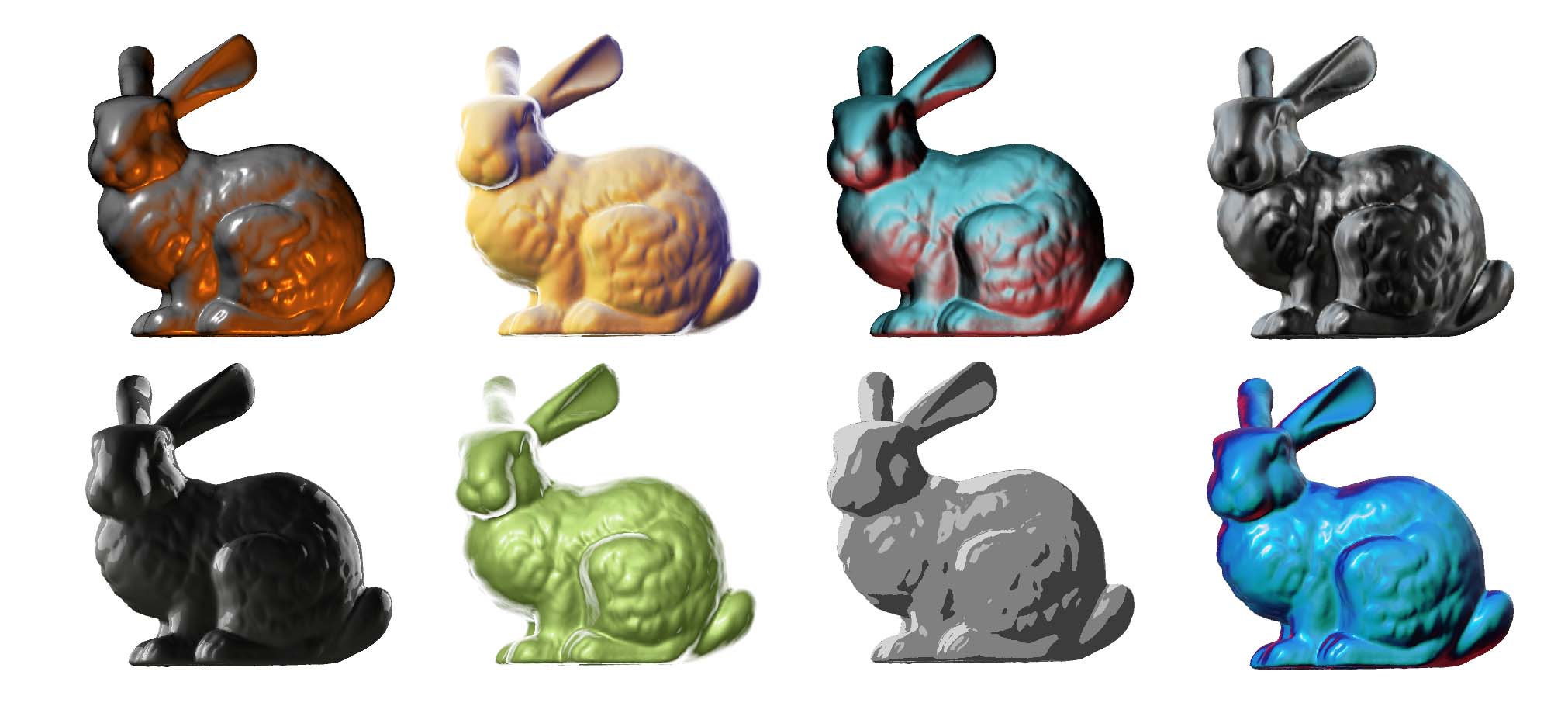
MatCap (Material Capture) shader uses an image of a sphere as a view-space environment map. It’s very cheap and looks great when the camera doesn’t rotate. It is widely used in 3D sculpting software (like Zbrush) to preview meshes.
Reference
- Explaination of application in Zbrush
- Paper: The Lit Sphere: A Model for Capturing NPR Shading from Art
Demo
This is a simple MatCap shader showcasing application I made by Unity:
- Scroll mouse wheel to zoom;
- click and drag to change view angle;
- click top arrow to review the MatCap texture panel and try different effect.
Shader Code
This is the shader code of a typical MatCap shader. It is extremely straightforward on the theory and easy to implement.
Shader "MatCap_Victor/Plain"
{
Properties
{
_Color ("Main Color", Color) = (0.5,0.5,0.5,1)
_MatCap ("MatCap (RGB)", 2D) = "white" {}
}
Subshader
{
Tags { "RenderType"="Opaque" }
Pass
{
CGPROGRAM
#pragma vertex vert
#pragma fragment frag
#include "UnityCG.cginc"
struct v2f
{
float4 pos : SV_POSITION;
float2 cap : TEXCOORD0;
float3 model_normal : TEXCOORD1;
float3 world_normal : TEXCOORD2;
float3 view_normal : TEXCOORD3;
};
v2f vert (appdata_base v)
{
v2f o;
o.pos = mul (UNITY_MATRIX_MVP, v.vertex);
// this is model normals
o.model_normal = v.normal;
// transform normal vectors from model space to world space
float3 worldNorm =
normalize(
_World2Object[0].xyz * v.normal.x +
_World2Object[1].xyz * v.normal.y +
_World2Object[2].xyz * v.normal.z
);
// this is world normals
o.world_normal = worldNorm;
// transform normal vectors from world space to view space
float3 viewNorm = mul((float3x3)UNITY_MATRIX_V, worldNorm);
// or use built-in UNITY_MATRIX_V
// this is viewspace normals
o.view_normal = viewNorm;
// this is in the context of view space
// get the coordinate on XY plane, ignore z coordinate
o.cap.xy = viewNorm.xy * 0.5 + 0.5; // clamp (-1,1) to (0, 1)
return o;
}
uniform float4 _Color;
uniform sampler2D _MatCap;
float4 frag (v2f i) : COLOR
{
float4 mc = tex2D(_MatCap, i.cap);
return _Color * mc;
}
ENDCG
}
}
Fallback "VertexLit"
}
TBC